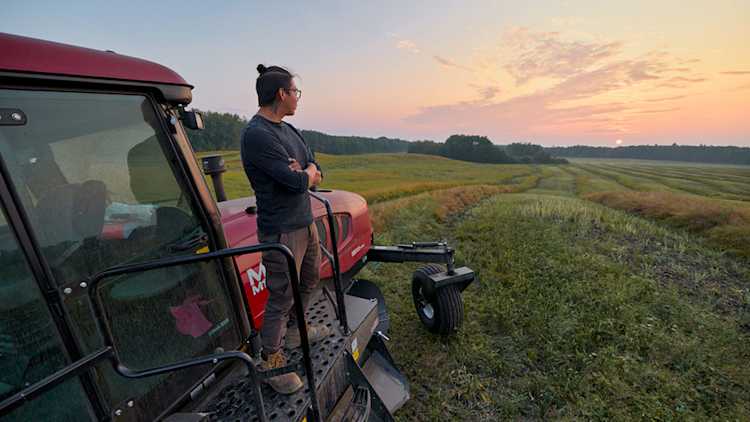Empowering Indigenous agriculture

Earlier this year, a surprising figure emerged regarding Canada’s agriculture sector – increasing the participation of Indigenous Peoples within agriculture and bridging the gap in farm income between Indigenous and non-Indigenous farm operations could translate into a $1.5-billion boost in agriculture Gross Domestic Product.
Indigenous leadership
Enter the National Circle for Indigenous Agriculture and Food (NCIAF), an Indigenous-led, non-profit organization working closely with Indigenous entrepreneurs and communities that are starting, growing or scaling agriculture and food projects.
While FCC, Royal Bank of Canada (RBC), the Saskatchewan Ministry of Agriculture and MNP contribute financial and service-in-kind support to the NCIAF, many other stakeholders are discussing how to support Indigenous agriculture and food.
Tailored services
Acting as a hub for First Nations, Inuit and Métis to accelerate in business and agriculture, NCIAF connects entrepreneurs to industry stakeholders. NCIAF President and CEO, Kallie Wood, emphasizes that the organization’s tailored services meet the specific needs of Indigenous communities while approaching agriculture through an Indigenous lens.
“We work on various projects across Canada, connecting communities based on their capacity and needs,” Wood says. “Traditional harvesting, hunting, fishing and trapping have provided food security and sovereignty to our communities since time immemorial. Anything Mother Earth provides to feed our people is agriculture.”
Sustainable practices
Tackling food insecurity is one of the goals of the NCIAF. Community gardens, greenhouses and processing facilities are becoming more prevalent, driven by a renewed focus on long-term sustainability and regenerative agriculture.
More than half of Indigenous Peoples and communities face high levels of food insecurity, but Wood says that’s changing due in part to the uncovering of history.
A reconciliation focus
“When the Kamloops [residential school] discovery of our children happened, it awakened Canadians. When we look at reconciliation, it has changed the whole conversation. More people are stepping up to the plate and putting action to reconciliation.”
“Reconciliation is one of our key pillars,” Wood says. “It’s the catalyst to success when it comes to building relationships, understanding our traditional knowledge and lived reality of being on the land, and that stewardship and bringing it all together.”
The NCIAF’s impact is evident in success stories emerging from its initiatives, including breaking ground on a community garden and school program in Saskatchewan, highlighting its flexibility and community-driven approach. Moreover, it has established an Indigenous advisory circle to ensure Indigenous voices shape its future direction.
“The NCIAF is built by Indigenous Peoples for Indigenous Peoples,” Wood says. “We’re a non-profit with an independent board. We’re not here to make money. We’re here to make a movement and assist Indigenous people in advancing agriculture through nourishing nations and empowering generations.”
From an AgriSuccess article by Tim Parent.
